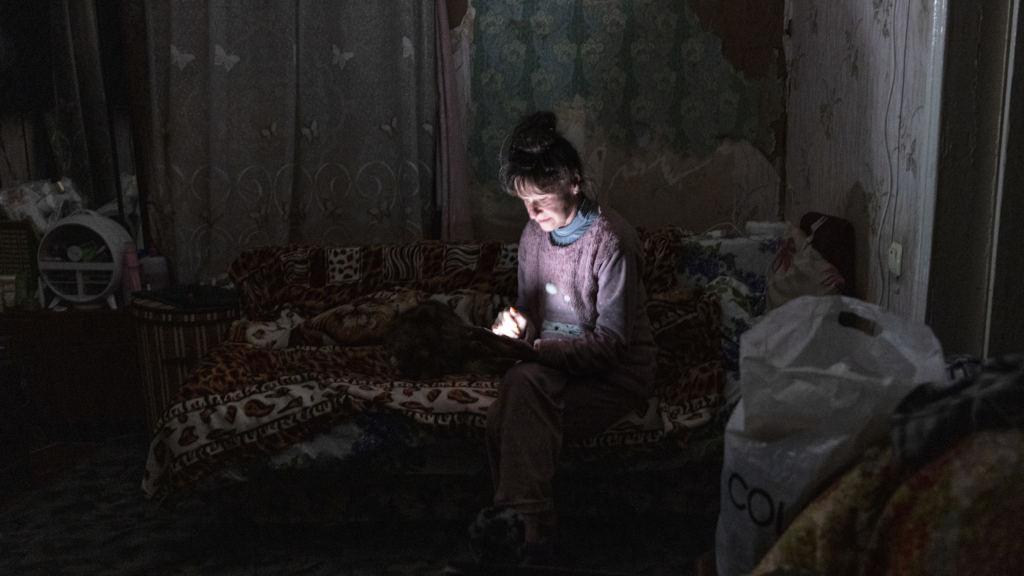Last year, I started teaching you, dear Wilder, what to do if you see an animal on the trail who could possibly hurt you. We’ve learned a lot together!
I explained the importance of observing a bear’s behavior to determine your best course of action. Same goes for coyotes. I also taught you that, if you actually see a mountain lion, you want to make so much noise they think, “‘What the hell is that?’” and leave.
We learned how you should not throw rocks at rattlesnakes to get them to move off trail, but it is sometimes OK to give them a little nudge with a long stick or hiking pole. (Read: sometimes.)
I hope, like me, you feel safer and more prepared should you encounter one of these critters in the woods. Now, I want to instruct you on the importance of dancing at the beach. Yes, it’s for your safety. It’s a specific type of boogie known as the “stingray shuffle.”
Newsletter
You are reading The Wild newsletter
Sign up to get expert tips on the best of Southern California’s beaches, trails, parks, deserts, forests and mountains in your inbox every Thursday
You may occasionally receive promotional content from the Los Angeles Times.
Stingrays live all over the world, including right here along the coastline of Southern California. Round stingrays, a sand-colored little cutie, are the most common of this cartilaginous fish group to be found around our beaches, and thus, the one you are most likely to step on.
That’s in part because they don’t want to be seen. Round rays are usually less than a foot long and often “cover themselves with mud or sand, leaving only the eyes and spiracles exposed,” according to the Aquarium of the Pacific, “an excellent camouflage technique.”
It’s less likely that you’ll see a bat ray in shallow water. If lucky, you might spot one of those swimming near a local pier.
Although data on the number of stings in L.A. County were not readily available, the experts I spoke to agreed that it’s common enough that you need to be prepared when you visit the beach. I’d usually end with “Let’s dive in!” to be cheeky, but that directly contradicts the advice below. Puns aside, here are five tips to avoid a painful stingray encounter at the beach.
1. Shuffle your feet as you enter the water
Rather than stepping into the ocean, you should shuffle your feet as you enter the water. This is the aforementioned “stingray shuffle,” where you kick up sand, hopefully causing enough of a commotion that it will prompt any rays in the area to swim into deeper water.
“Their first line of defense is to swim away,” said Sara Lesser, education supervisor at the Aquarium of the Pacific in Long Beach. “That stinger is the last thing they want to use, and they are pretty fast swimmers. If they get spooked, the first thing they’re going to do is try to get away from whatever spooked them.”
A bat ray, a species commonly found along the coast line from Oregon to the Gulf of California.
(Aquarium of the Pacific)
2. Don’t touch rays in the wild
At the aquarium, you can touch rays in a controlled setting around trained staffers. Out in the open ocean, don’t touch any animal, even if you perceive it to be gentle. Rays are wild animals too, and even if you’re out snorkeling, just watch it go by.
“They don’t have any interest or want to interact with us,” Lesser told me. “Snorkeling with them is a great way to see them, but make sure, like with all animals, [you] give them their space and distance. You’re entering their home. Be a quiet observer of them and their habitat.”
3. Be aware of your continued risk of being stung
Stingrays can be found anywhere along the ocean bottom, but you should especially use caution when walking along a nice flat seabed on a calm day when the water is shallow and warm.
“If you kick up enough sand, and you’re around enough people, the stingrays are going to get away from you,” said Pono Barnes, a spokesperson for the ocean lifeguard division of the L.A. County Fire Department. “They’re not going to wait until you get a foot away to swim away. If you’re shuffling around, and relatively in the same spot while you’re enjoying the water, the stingrays are going to clear out and move down the beach where it’s calm.”
Barnes said you don’t have to constantly shuffle your feet, but if you’re the only person out on a sand bar, it’s good to shuffle as you move around. Another option: swim.
Barnes has never been stung and attributes that to swimming to travel through the ocean. “They’re going to stay on the bottom. They’re not going to come up to sting you,” he said.
4. If stung, don’t pee on it
“I would not recommend that, that would not alleviate your pain,” Barnes said.
Given the myth around peeing on a jellyfish’s sting to alleviate pain, I had to ask. Not only does urine not help remove venom from a ray’s barb, it also should not be used to treat a jellyfish sting. Truly, the more you know!
5. Seek actual medical aid
Generally, being stung by a small round ray will feel like you’ve stepped on a piece of glass. That sensation will go away momentarily, only to be replaced by a throbbing pain that will vary in intensity depending on how much venom you received from the ray’s barb.
“I’ve seen linebacker-sized guys that are completely inconsolable, can’t talk because they’re writhing in pain, and then I’ve seen little kids that are totally fine that got stung,” Barnes said. “It really depends on how much venom gets delivered at the time you got stung.”
You should head, hopefully pee-free, to the nearest lifeguard stand.
The lifeguards will assess your injury, make sure the barb isn’t still in your foot and then wash the wound out.
Then, they will place your foot inside a Mylar-type bag where they’ll add the hottest water you can stand to kill the venom.
“What that hot water does is, it essentially cooks off that venom and the protein in the venom, and once that breaks down, the pain goes away,” Barnes said.
(Fun fact: Every morning, lifeguards collect scalding hot water and keep it in insulated containers in case a beachgoer suffers a sting. They’re always prepared for this to happen!)
It can take a few hours for the pain to subside.
“It’ll feel like you’re getting better and that you can take your foot out of the water, and then as soon as you take your foot out of that hot water, you’ll feel that pain start to come back,” Barnes said. “Typically, it’s the end of your beach day.”
The lifeguards will take you to the end of the beach, where your driver will take you home. Lifeguards can even help your driver plan the route home to include the nearest coffee shop or convenience store where you could get a refill on hot water, depending on how far you’re going.
Most people don’t have any other issues once the venom is cooked off. Those who do develop an infection should go to an urgent care and inform the physician they were stung by a stingray, as there are specific antibiotics more effective for marine-related injuries.
I hope you don’t have to ever use this advice. If you do, may your pain be minimal and aid be rendered swiftly!

3 things to do

Volunteers work to restore habitat at a Friends of the L.A. River event.
(Friends of the L.A. River)
1. Clean up habitat down by the L.A. River
Volunteers are needed from 8 to 11 a.m. Saturday at the Sepulveda Basin Wildlife Reserve for Friends of the L.A. River’s habitat restoration day and Earth Month celebration, postponed because of rain last month. Participants will restore native habitat in the reserve, yanking invasive plants and making seed balls. Local organizations, including the California Native Plant Society and San Fernando Valley Audubon Society, will teach volunteers about local flora and fauna. Learn more and register at folar.org.
2. Glean native plant knowledge in Glendale
Officials from Glendale’s Office of Sustainability will lead a 2.8-mile hike at 10 a.m. Saturday through the Catalina Verdugo Trail, where they will teach hikers about native plants such as laurel sumac, sycamores and sages along the path. This lightly moderate path meanders around the Glendale Sports Complex in the San Rafael Hills. It is lush, and as such, long shirts and pants are recommended. Guests should also bring water and sun protection. Register at laworks.com.
3. Meet new plants at the L.A. River
Herb Club L.A. will host a walk at 5 p.m. Sunday around the L.A. River, where guides will teach guests about native plants and their medicinal, ecological and cultural significance. Afterward, guests will be invited to imbibe kefir water while sketching plants and adding to their field guides. Art supplies will be provided, but guests are welcome to bring existing pieces to work on. Tickets range from $23.18 to $33.85, with participants encouraged to pay what they can. Register at eventbrite.com.

The must-read

(Marie Doazan / For The Times)
The Sierras offer ample opportunity to backpack to alpine lakes and high peaks, where you’ll have much of the trail to yourself. But it isn’t always doable to drive a few hours north for a backpacking trip. That’s why I put together this helpful guide on how to backpack in our own backyard! There are around 20 backpacking sites around L.A. County, and I chose the best ones to check out this summer. Everything on my list is open. The roads to reach them are paved, and the trails to reach each site are generally well-maintained. I am looking forward to revisiting several spots on my list, including Valley Forge, where the stars will be bright, and the frogs hopefully loud.
Happy adventuring,

P.S.
Good news! This past weekend, a volunteer at Project Monarch L.A. spotted the first butterfly chrysalis that the group has seen in its three years of restoring habitat for the at-risk winged wonder. Since 2023, the project’s volunteers have spent hundreds of hours planting milkweed and native pollinating plants and taken other steps to help Los Angeles State Historic Park near Chinatown be a place where monarchs can reproduce and thrive. In the coming days, the little green chrysalis will hopefully transform into an orange-and-black beauty!
For more insider tips on Southern California’s beaches, trails and parks, check out past editions of The Wild. And to view this newsletter in your browser, click here.

